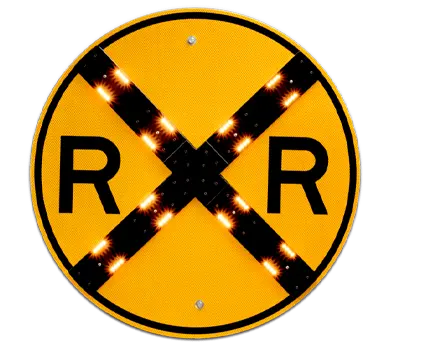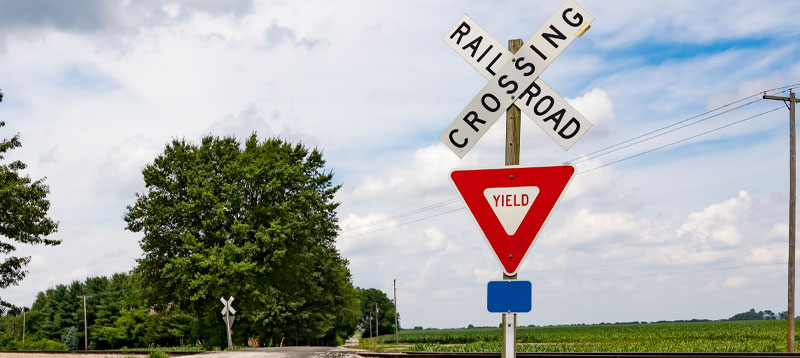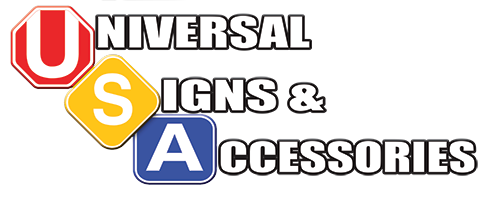Despite the name, “passive railroad crossings” are not crossings where the train slows so conductors can tip their hats. Passive railroad crossings are locations that do not have warning signs with flashing lights or devices that activate as a train approaches, like beacons or automatic gates. Typically, these are where the road and the train rail are level, which is also referred to as a “grade crossing.” In order for motorists, and pedestrians, to have adequate warning of the rail crossing at these passive locations, signs need to be used properly…starting with the Crossbuck.
Crossbuck (MUTCD Code R15-1)
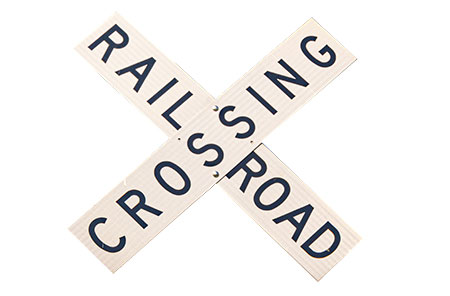
R15-1
The Grade Crossing, or Crossbuck, sign (R15-1) requires road users to yield the right-of-way to rail traffic at a grade crossing. Each blade of the RAILROAD CROSSING Crossbuck needs to have reflective sheeting. Sign blades are 48 inches long and 9 inches wide.
Per the MUTCD, “as a minimum, one Crossbuck sign shall be used on each highway approach to every highway-rail grade crossing, alone or in combination with other traffic control devices.”
MUTCD Guidance:
Crossbuck signs should be located with respect to the highway pavement or shoulder in accordance with the criteria in Chapter 2A of the MUTCD (click here). The traffic code also has guidelines for sign locations in respect to the tracks.
The minimum lateral clearance for the nearest edge of the Crossbuck sign should be 6 feet from the edge of the shoulder or 12 feet from the edge of the traveled way in rural areas (whichever is greater).
“Where unusual conditions make variations in location and lateral clearance appropriate, engineering judgment should be used to provide the best practical combination of view and safety clearances.” MUTCD
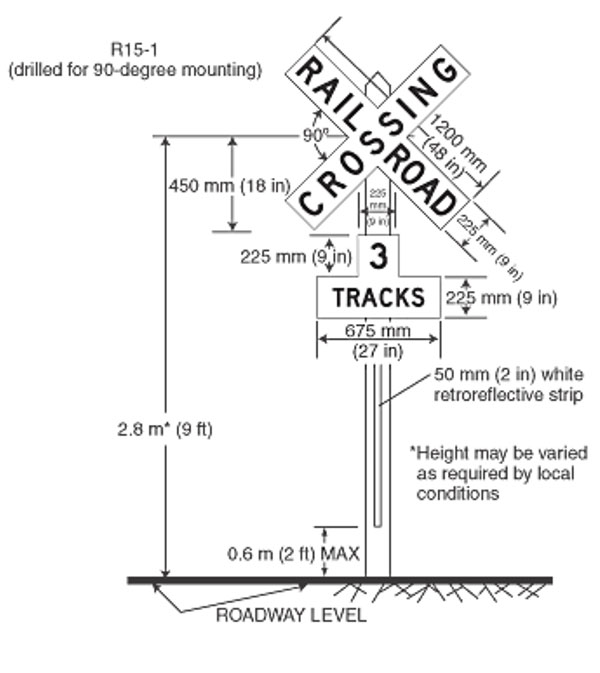
“Where unusual conditions make variations in location and lateral clearance appropriate, engineering judgment should be used to provide the best practical combination of view and safety clearances.” MUTCD
Crossbuck in combination with other traffic control devices
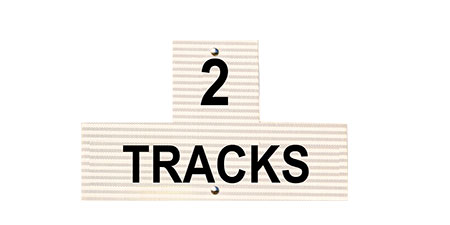
R15-2P
In crossing locations with two or more tracks, use a Supplemental Number (R15-2P) plaque below the Crossbuck sign to indicate the number of tracks. This way, people know how many tha-thumps to count driving over the crossing. No, while drivers are free to count the the-thumps, this R15-2P plaque is to give motorists accurate warning before they cross.
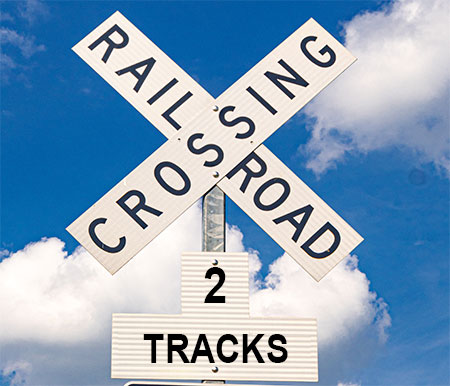
Combined with a Yield or Stop sign
A Yield (R1-2) sign is the default regulatory device for Crossbuck Assemblies only at passive crossings. The Crossbuck actually means to yield, but not everyone knows this. So a Yield sign helps make the point. If an engineering study of the location determines that a Stop (R1-1) sign is more appropriate, a Stop sign can be utilized. In either case, there are a few assembly rules to follow when adding a Yield or Stop sign on the same support as the Crossbuck.
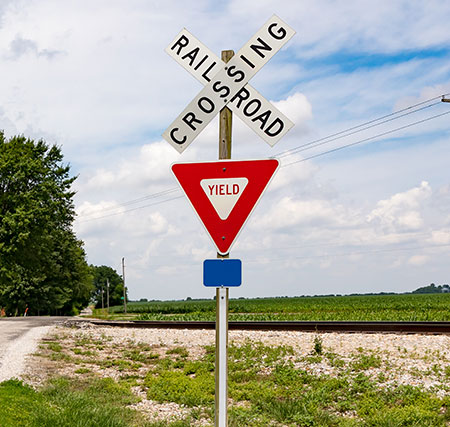
MUTCD Guidelines
- Use a 2-inch wide white, or red, reflective strip, on the front of the post.
- Use a 2-inch wide white reflective strip on the back of the post.
- The distance from the bottom of the YIELD or STOP sign to the roadway level should be at least 4 feet for installations of YIELD or STOP signs on existing Crossbuck sign supports. (It’s a minimum of 5 feet for new installations.)
Yield or Stop Signs can be incorporated on a separate sign support than the Crossbuck, as long as the separate Yield or Stop sign post is at a point where vehicles are to stop. And guidelines for placement are put into two categories: rural areas and areas with pedestrian traffic or parking.
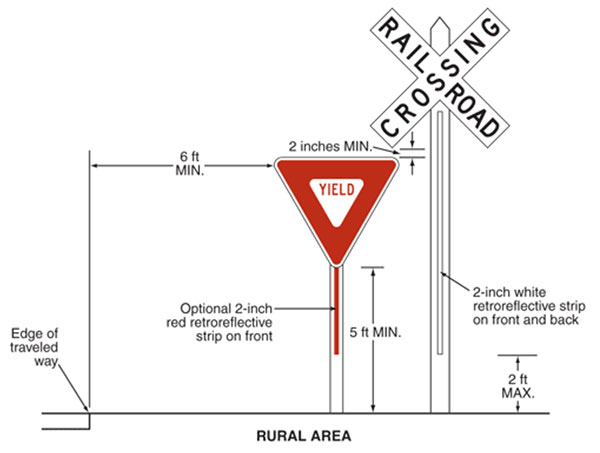
Rural Areas
In rural areas, the Yield sign mounted on a separate sign support is to the left of the Crossbuck sign. The arms of the crossbuck sign are shown overhanging the Yield sign.
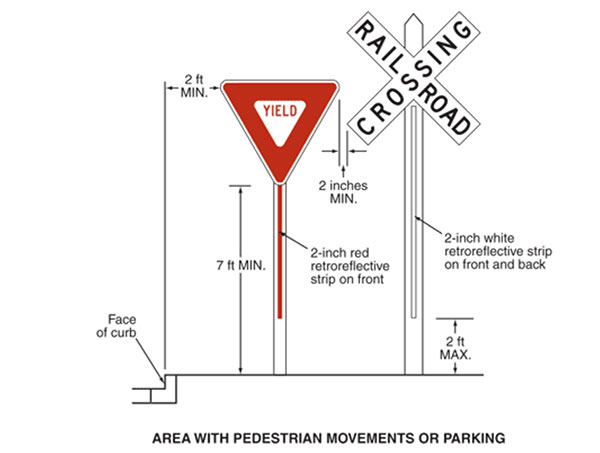
Areas with Pedestrian Movement
In areas with pedestrian movements, the separate Yield sign is mounted taller than the Crossbuck.
Railroad Crossing Advance Warning Sign
A Highway-Rail Grade Crossing Advance Warning (W10-1) sign shall be used on each highway in advance of every highway-rail grade crossing. W10-1 is a round yellow sign with a black border and a black “X” covers the sign, and two “R’s” are shown in the left and right quadrants of the sign.
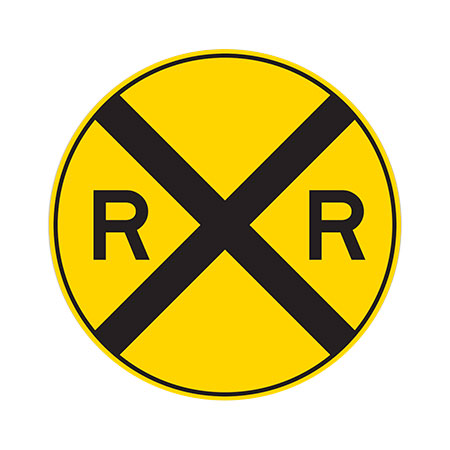
W10-1
The following circumstances may override the need for this warning sign:
On an approach to a grade crossing from a T-intersection with a parallel highway if the distance from the edge of the track to the edge of the parallel roadway is less than 100 feet and W10-3 signs are used on both approaches of the parallel highway
On low-volume, low-speed highways crossing minor spurs or other tracks that are infrequently used and road users are directed by an authorized person on the ground to not enter the crossing at all times that approaching rail traffic is about to occupy the crossing;
In business or commercial areas where active grade crossing traffic control devices are in use.
Where physical conditions do not permit even a partially effective display of the sign.
Passive Railroad Crossing Warning Signs
There are a whole slew of warning signs that can be used at passive railroad crossings. A few of these signs are diamond-shaped legends that show if the railroad crossing is skewed in relation to the road, like the W10-12 shown below. Other warning signs show crossroads that may be nearby the tracks.
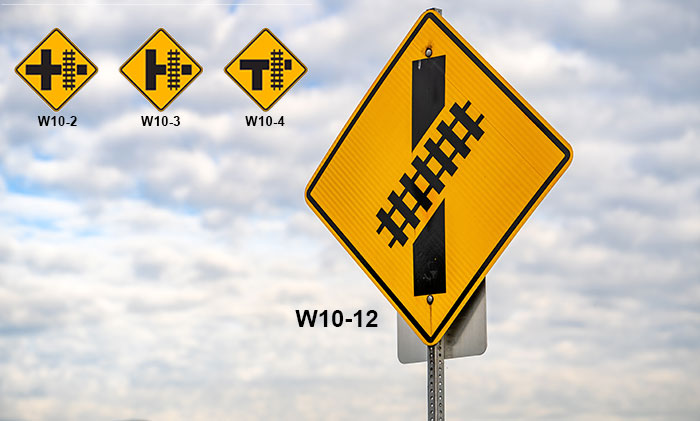
Our full service Traffic Signs Fabrication Division utilizes state of the art equipment to produce the finest quality traffic control, street, and guide signs.
Dangers at passive railroad crossings can be limited with correct signage that is set up properly. The first step would be using the MUTCD as a reference, as well as state and local requirements.
Active Railroad Crossings have warning signs with LED lights.
Click here to read more about these intelligent warnings for railroad crossings.
